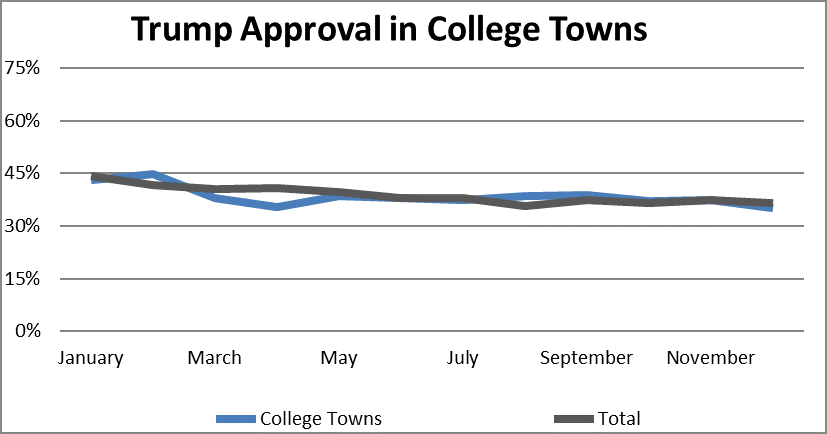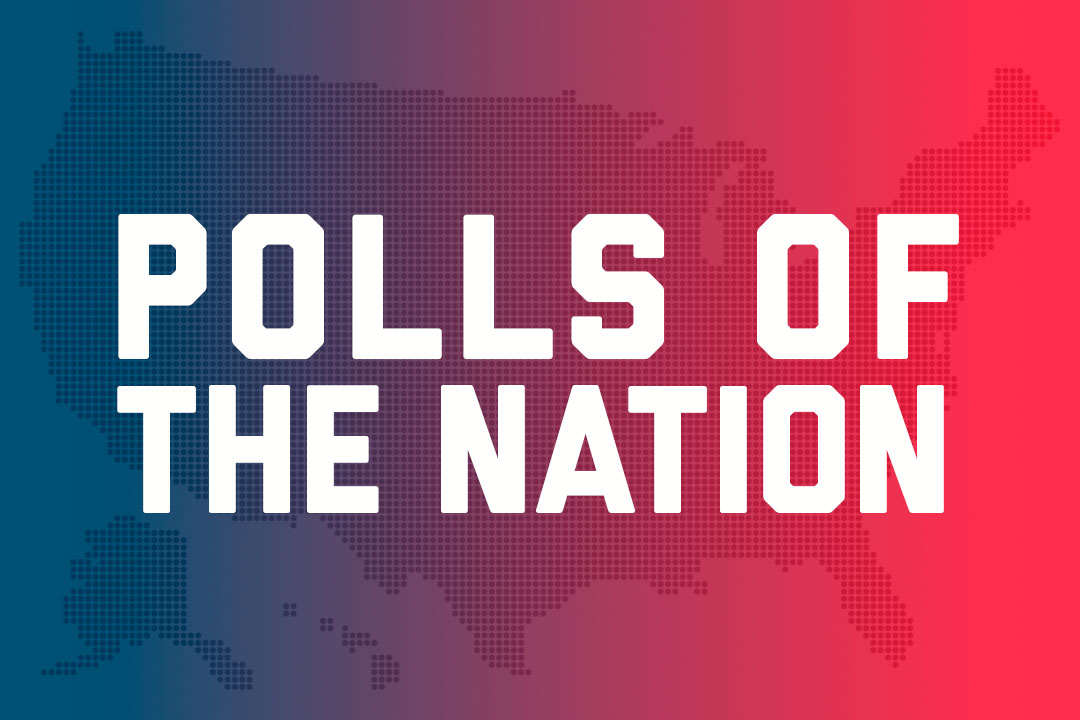By Dante Chinni
Research Professor and Director of the American Communities Project
At the one-year anniversary of Donald Trump’s inauguration, the American Communities Project is using 2017 data from Gallup to analyze how different kinds of communities have viewed the president’s job performance. Where are his strengths and weaknesses as year two begins?
Part Three: College Towns

Since the 2016 presidential campaign, Donald Trump’s struggles to win over younger voters have been well documented. If there is surprise about the president’s 35 percent approval in “college town” counties at the end of 2017, it may be that the number isn’t lower.
Over the course of 2017, Trump’s approval fell by 8 points in the ACP’s college town counties, to 35 percent in December from 43 percent in January of 2017, according to Gallup. That was the same amount by which his approval fell overall. In fact, a chart of the approval numbers for the president in college towns and overall look very similar.
Considering Trump’s abysmal numbers with young voters (he’s at 30 percent approval with 18- to 29-year-olds currently in Gallup’s data), why is his approval rating sitting so close to the national average in places most people consider to be bastions of political liberalism? The composition of the nation’s 154 college towns helps explain the phenomenon and why Trump may find it hard to grow support in the counties shown in light brown on the map below.
First, remember not everyone who lives in a college town county is a college student. There is almost always some form of “town versus gown” tension in these places that often holds a liberal versus conservative component.
Furthermore, a lot of the college towns in the ACP also hold large rural populations, which tend to lean Republican. That rural population can be seen in communities ranging from Centre County, Pa., home of Penn State, to Lane County, Ore., home of the University of Oregon, and it is a brake against a total collapse of support for the president in them.
Viewed that way, the slow steady erosion in approval for Trump makes sense.
But that understanding also shows why it will be difficult for Trump to grow support in the college towns in any significant way. The president’s approval rating remains especially low with a big chunk of the population in the college towns: The students who define these places — and often the faculty members who educate those students.
In other words, even if college town counties usually lean Democratic, and most do, the split in the population makes them deeply divided politically and they are likely to track just below the national figures on the president’s approval rating. Trump’s approval rating isn’t likely to fall too far in them, but don’t expect it to rise much.
Dante Chinni directs the American Communities Project at the George Washington University and writes the “Politics Counts” blog for The Wall Street Journal. His research explores the divides in America by studying how demographic differences affect community economics, culture and politics.


